Great plague hero traditional Chinese medicine
editorial comment/note
"When the medical profession is faced with a major epidemic, people are most concerned about whether there are specific drugs. It seems that this is the only criterion for formulating a response plan. Just like this time, there is no specific medicine so far. What should I do? " Pan Yi, a professor and doctoral supervisor at Guangzhou University of Traditional Chinese Medicine, thinks that we can change our way of thinking from "whether there are specific drugs" to "whether there are specific treatment ideas". For example, Chinese medicine can adjust and improve patients’ immune function, so that they can cope with the virus, thus achieving curative effect.
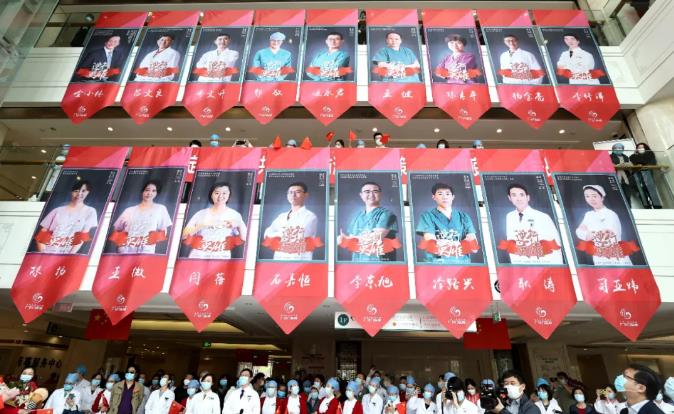
On April 15th, Guang ‘anmen Hospital of Chinese Academy of Traditional Chinese Medicine welcomed 15 medical staff from Guang ‘anmen Hospital, the first batch of Chinese medical aid team in Hubei, to go home.
Great epidemics give a good prescription. Traditional Chinese medicine "three drugs and three parties", represented by Jinhua Qinggan Granule and Qingfei Paidu Decoction, plays an important role in the clinical treatment of the epidemic, and Chinese medicine has been highly concerned by all walks of life. Many experts said that the prevention and treatment of infectious diseases by Chinese medicine pays attention to enhancing the human body’s own resistance and repair ability, and pays attention to maintaining the overall balance, which makes Chinese medicine have its own place in dealing with infectious diseases with unclear causes and lack of vaccines and special drugs.
Juck Zhang Zhong, a researcher at the China Institute of Science and Technology Information and vice chairman of the Chinese Philosophy Committee of the Chinese Society of Philosophy History, said: "Chinese medicine has always been a part of the treasure house of Chinese civilization, and it should be a new trend to distinguish between Chinese medicine and Chinese medicine."
Part I: "Three Drugs and Three Parties" vs. COVID-19
"We didn’t find a specific medicine, but we have an effective plan." In the fight against COVID-19, Chinese medicine represented by "three medicines and three parties" is an effective scheme to fight the epidemic. "Three drugs and three parties" have played an important role in preventing mild illness from turning into severe illness, severe treatment and patient rehabilitation.
The whole course of application, more than 90% patients use traditional Chinese medicine.
Mr. Yang, a 68-year-old critically ill patient in COVID-19, has a history of diabetes for three years. He once had a high fever of 39 degrees Celsius, which was diagnosed as wind-warm disease and pathogenic invasion of lung-health syndrome by TCM. In Hubei Provincial Hospital of Traditional Chinese Medicine, the treatment is mainly to clear away heat and toxic materials, dispel wind and relieve exterior syndrome, and at the same time, western medicine is given anti-infection, anti-virus and symptomatic support treatment. After 14 days of treatment, the nucleic acid test was negative twice, and CT showed that the lesions in both lungs were obviously reduced. Mr. Yang was cured and discharged.
"Without specific drugs, the war epidemic should play the role of traditional Chinese medicine." After the outbreak of COVID-19, state administration of traditional chinese medicine set up five TCM medical teams consisting of 770 medical staff to help Wuhan urgently, and 29 provinces, autonomous regions and municipalities across the country sent more than 4,900 TCM medical staff to help Hubei, accounting for about 13% of the total number of medical staff assisting Hubei, including 3 academicians and hundreds of experts.
"Early intervention of Chinese medicine has stabilized people’s hearts and reduced new cases, which has played a role in preventing and controlling the spread of the epidemic from the source." The person in charge of the Comprehensive Department of Traditional Chinese Medicine of Hubei Provincial Health and Wellness Committee said. At the early stage of the epidemic, Hubei promptly distributed traditional Chinese medicine to the isolated personnel, frontline medical staff and community workers in centralized isolation points, and distributed 440,000 pneumonia prevention prescriptions and 190,000 Chinese patent medicines. The isolated personnel should "take all the traditional Chinese medicine".
Shelter Hospital is the key measure to realize all patients in COVID-19 should be treated. Zhang Boli, academician of China Academy of Engineering and president of Tianjin University of Traditional Chinese Medicine, said: "In Fangcang Hospital, it is our goal that mild diseases do not turn into severe ones, so we have adopted comprehensive treatment of traditional Chinese and western medicine, in addition to taking decoction or Chinese patent medicine, there are also comprehensive treatments such as massage, scraping and application."
A total of 11,740 people were admitted to 16 shelter hospitals in Wuhan. Each shelter hospital was equipped with 4-8 Chinese medicine experts, and four kinds of Chinese patent medicines, such as Chinese medicine decoction and Jinhua Qinggan granules, were distributed simultaneously. The utilization rate of Chinese medicine was 99.93%.
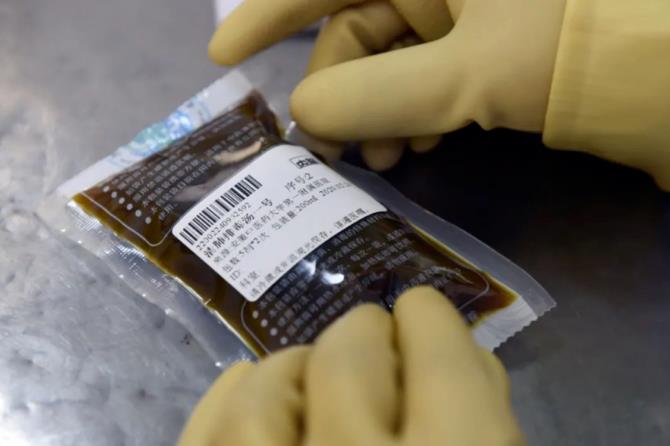
On February 24th, Chinese pharmacists labeled the decoction "Qingfei Paidu Decoction" in the decocting room of the First Affiliated Hospital of Anhui University of Traditional Chinese Medicine.
Jiangxia Fangcang Hospital is a specialized Chinese medicine Fangcang Hospital. Here, the medical staff adopted a comprehensive treatment method of traditional Chinese and western medicine, with all patients covered with Chinese medicine decoction, and also cooperated with traditional Chinese medicine therapies such as moxibustion, supplemented by Tai Ji Chuan and Baduanjin, and made a set of Chinese medicine "combination boxing". None of the 564 patients in Jiangxia Fangcang Hospital became severe.
"The comprehensive treatment of traditional Chinese medicine has significantly reduced the proportion of mild illness to severe illness, which is the key to our victory." Zhang Boli said.
For severe patients, western medicine is the main method, and the combination of Chinese and western medicine is adopted. In Jinyintan Hospital, Hubei Hospital of Integrated Traditional Chinese and Western Medicine and Thunder God Mountain hospital, Chinese medicine also participated in the whole process. Zhang Boli said: "Shengmai injection and Shenmai injection have an effect on stabilizing patients’ oxygen saturation and improving oxygenation level; Tanreqing injection, Reduning injection and antibiotics have synergistic effect; Xuebijing is effective in inhibiting inflammatory storm and controlling the progress of the disease. Critical care, integration of Chinese and Western medicine and reduction of mortality are the core of our success. "
When patients just leave the hospital, their physical function is often weak, sometimes they are weak and cough, and their immune function has not been completely restored. Chinese medicine is also actively providing rehabilitation programs. On February 24th, the rehabilitation clinic of Wuhan Hospital of Traditional Chinese Medicine was opened. As of April 11th, 862 online and offline patients have been provided with rehabilitation treatment.
According to the data provided by Yu Yanhong, Party Secretary of state administration of traditional chinese medicine, 74,187 people, accounting for 91.5%, used traditional Chinese medicine in COVID-19. Among them, 61,449 people in Hubei Province used Chinese medicine, accounting for 90.6%. From preventive medication in isolated population, to the diagnosis of mild and severe patients, and then to later rehabilitation, the participation of traditional Chinese medicine is wide, deep and highly concerned, and the total effective rate of traditional Chinese medicine is over 90%.
Old drugs are used newly, and the clinical effect of "three drugs and three parties" is obvious
"Traditional Chinese medicine is a holistic medicine that integrates prevention, treatment and rehabilitation. It has a long history and is a household name. When encountering major epidemics, it will look for solutions." Yu Yanhong said. In recent years, viral respiratory infectious diseases have occurred frequently, and Chinese medicine has accumulated experience in treating SARS, H1N1 and other diseases.
In the absence of specific drugs and vaccines for the epidemic in COVID-19, experts combined with clinical practice, summed up the experience of traditional Chinese medicine in treating viral infectious diseases, explored ancient classic prescriptions, and screened out a number of effective prescriptions represented by "three drugs and three parties".
Jinhua Qinggan Granule was developed during the epidemic of H1N1 in 2009. It is made up of Maxing Shigan Decoction in Treatise on Febrile Diseases by Zhang Zhongjing in Han Dynasty and Yinqiao Powder in Treatise on Febrile Diseases by Wu Jutong in Qing Dynasty. Its main functions are dispersing wind, dispersing lung, and clearing away heat and toxic materials. According to Academician Zhang Boli, a group of 102 clinical controlled studies in Wuhan showed that Jinhua Qinggan Granule, compared with the control group, reduced the proportion of patients with mild and common diseases in COVID-19 by 2/3, and shortened the fever-relieving time by 1.5 days.
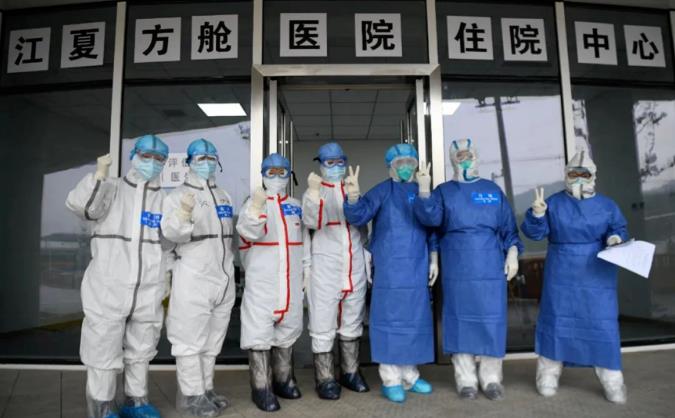
Jiangxia Shelter Hospital, located in Dahuashan Outdoor Sports Center, Jiangxia District, Wuhan, is the first shelter hospital in Wuhan that focuses on traditional Chinese medicine.
Lianhua Qingwen is based on the classic prescriptions, which was created during SARS in 2003. Its main functions are also to clear away the plague and detoxify, spread the lung and relieve heat.
A study jointly attended by 23 hospitals in 9 provinces and cities in China shows that Jinhua Qinggan and Lianhua Qingwen, two old drugs, are effective in treating mild and common types in COVID-19.
Xuebijing injection is also a new use of old medicine. Professor Qiu Haibo, vice president of Zhongda Hospital affiliated to Southeast University, said that Xuebijing could reduce the death rate of severe pneumonia by nearly 8.8 percentage points after it was used in clinic at the end of January according to the evaluation system of western medicine. "Xuebijing injection may be a very important therapeutic drug in the treatment of severe and critical patients." Qiu Haibo said.
"Although Chinese medicine and western medicine belong to two different medical systems and have different perspectives on health and disease, they are both based on the fact of clinical efficacy." Huang Luqi, academician of China Academy of Engineering and president of Chinese Academy of Traditional Chinese Medicine, thinks.
Among the three parties, the first one is Qingfei Paidu Decoction, which comes from Maxing Shigan Decoction, Shegan Mahuang Decoction, Xiaochaihu Decoction, Wuling Powder, etc. It is a light, common, heavy and critical general prescription. 57 cases of severe patients were treated with combination of traditional Chinese and western medicine, and none of them became critical. After two courses of treatment (6 days), 53 cases of lung lesions showed different degrees of shrinkage and absorption.
Xuanfei Baidu prescription is condensed on the basis of classic prescriptions such as Maxing Shigan Decoction, Maxing Yigan Decoction, Keli Jujube Xiefei Decoction and Qianjin Weijing Decoction. In Wuhan Hospital of Traditional Chinese Medicine, Hubei Hospital of Integrated Traditional Chinese and Western Medicine and Jiangxia Fangcang Hospital, a cohort study of 500 patients treated with this prescription showed that the symptoms of fever, cough and fatigue were obviously alleviated in light and ordinary patients, and none of them became severe.
On the basis of the prescription recommended by the national diagnosis and treatment plan, the medical team of Chinese Academy of Traditional Chinese Medicine was optimized in Jinyintan Hospital in combination with clinical practice. After using this prescription, 75 critically ill patients enrolled in the clinical controlled trial in Jinyintan Hospital showed obvious improvement in lung inflammation and clinical symptoms diagnosed by CT, and the nucleic acid turned negative and the hospitalization time was shortened by an average of 3 days.
Liu Qingquan, president of Beijing Hospital of Traditional Chinese Medicine, believes that Chinese medicine has been treating infectious diseases for thousands of years and has formed a relatively mature scientific law. The treatment of infectious diseases mainly focuses on three treatment methods-clearing heat, eliminating dampness and detoxifying. The causes of various infectious diseases are different, and the three treatments are different. In this process, traditional Chinese medicine has produced classic prescriptions. "In view of a new disease like COVID-19, the new use of old drugs is really to be upright and innovative, and to treat diseases." Liu Qingquan said.
According to the report of the World Health Organization, in COVID-19, about 13% are severely ill and about 7% are critically ill. After the treatment of integrated traditional Chinese and western medicine, the weight transfer rate of Wuhan Fangfangcang Hospital is between 2% and 5%.
After the big exam, can Chinese medicine usher in opportunities?
On January 25th, 61-year-old Mr. Qian was sent to Guanggu Hospital of Hubei Provincial Hospital of Traditional Chinese Medicine for persistent high fever and dyspnea, and was diagnosed as COVID-19. Because of his many basic diseases and rapid development, he was declared critically ill twice. The team of Associate Professor Li Gang, director of the emergency department, treated him with integrated traditional Chinese and western medicine for more than 10 days, and Mr. Qian recovered and was discharged from hospital on February 17.
"Chinese medicine treatment runs through the whole course of Mr. Qian’s treatment." Li Gang introduced that the weapons of traditional Chinese medicine are far more than "three drugs and three parties". According to different course of disease, prescriptions of "Pneumonia No.2", "Pneumonia No.3", "Pneumonia No.4" and "Pneumonia No.5" are prescribed. After leaving the hospital, Mr. Qian continued to take the "Pneumonia No.5" decoction for some time.
Mr. Huo, a 68-year-old critically ill patient, was discharged from the hospital on the same day as Mr. Qian. The course of the disease is different between them, and the use of traditional Chinese medicine is also slightly different during the treatment. "After Mr. Huo was admitted to the hospital, he first used anti-infective western medicine to control the inflammatory reaction, and then used Chinese medicine for symptomatic conditioning." Li Gang said.
Yi Feng, head of the Fifth Department of Pulmonary Diseases of Hubei Provincial Hospital of Traditional Chinese Medicine, said that the participation of Chinese medicine in the treatment can promote the absorption of drugs in lung lesions and reduce or even solve complications and sequelae such as lung tissue injury and pulmonary fibrosis. At present, all patients who have been discharged after follow-up report that their condition is stable and they are gradually recovering.
Chinese medicine embodies China’s wisdom. Liu Qingquan said that when there was no specific western medicine, traditional Chinese medicine used the traditional wisdom of "encircling Wei to save Zhao". Through the adjustment of traditional Chinese medicine, the human environment in which the virus lived was changed from suitable to unsuitable, and the virus could not stay and left.
Qiu Haibo is an ICU doctor with a western medicine background. He believes that most western medicines are chemical drugs, and they are often treated for a certain target, while traditional Chinese medicine is a multi-target treatment. "Chinese medicine is more like teamwork and multi-point intervention." Qiu Haibo said that in view of the efficacy of traditional Chinese medicine, more and more internationally recognized evidence-based medicine methods are being used to evaluate the efficacy, and more and more traditional Chinese medicines, proprietary Chinese medicines and traditional Chinese medicine injections are using internationally recognized randomized controlled research methods to evaluate the efficacy.
"Although we don’t have a specific medicine, Chinese medicine has an effective plan. The treatment of integrated traditional Chinese and western medicine is the highlight of our Chinese program. " Zhang Boli said.
In the history of China, there were more than 300 preliminary statistics of epidemic diseases with a certain scale. Many Chinese medicine classics, including Treatise on Febrile Diseases and Treatise on Epidemic Febrile Diseases, were formed after the great epidemic, and accumulated very rich experience in fighting epidemic diseases. Professor Wang Wei, vice president of Beijing University of Chinese Medicine, believes that deep excavation from it has many important values at present and in the future, which cannot be discarded.
"In history, every epidemic is a big exam. After these big exams, Chinese medicine has accumulated rich experience and formed excellent classic prescriptions." Fan Heng, director of the Department of Traditional Chinese Medicine of the Union Hospital affiliated to Tongji Medical College, Huazhong University of Science and Technology, said that this epidemic is both a big test and an opportunity for the modernization of traditional Chinese medicine. However, he believes that Chinese medicine is still not paid enough attention. During the SARS in 2003, Chinese medicine also played a very important role, but after that, it "retired" and did not attract enough attention from the society. After this epidemic, we should rethink how to give full play to the role of traditional Chinese medicine, how to promote the modernization of traditional Chinese medicine, and combine traditional Chinese and western medicine to improve the curative effect.
Wang Wei believes that syndrome differentiation and treatment of traditional Chinese medicine is very unique, which is very different from modern medicine. He suggested that in the future, in the deployment of major national science and technology projects, the scientific laws of syndrome differentiation and treatment should be further studied, which will play a very important role in the development of Chinese medicine. (Reporter Pi Shuchu, Li Changzheng)
Medium-length: prejudice is the biggest obstacle
In the prevention and control of COVID-19 epidemic, the intervention of traditional Chinese medicine is a bright spot. Traditional Chinese medicine has not only gained more recognition in China, but also played a unique role in the global anti-epidemic.
In recent years, the development of traditional Chinese medicine has become a national strategy, which is favored by more and more people. However, the controversy about traditional Chinese medicine on the Internet has not diminished. How to form a good atmosphere of "believing in, loving and using Chinese medicine" in the whole society still has a long way to go.
Great epidemics give a good prescription.
"Xiaochaihu preventive prescription" is suitable for susceptible people in COVID-19. Making tea with Guanzhong is helpful for epidemic prevention, and "Ai Cang San" made of Artemisia argyi, Rhizoma Atractylodis and Radix Angelicae Dahuricae can be called "disinfectant in Chinese medicine" … Since the outbreak of COVID-19, some Chinese medicine epidemic prevention tricks have become popular at home and abroad because of their simplicity and effectiveness.
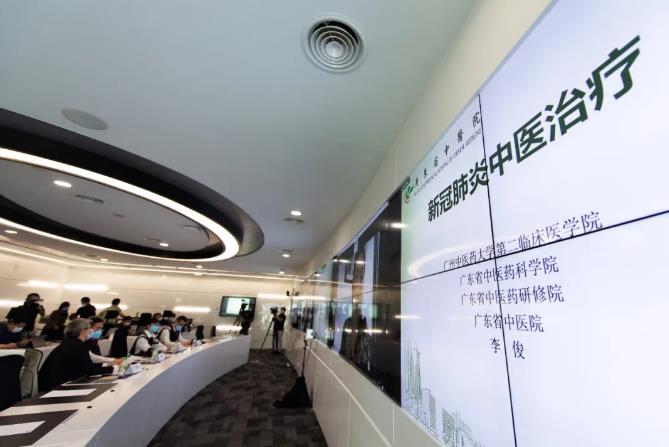
On April 22, China went to the Malaysian anti-epidemic medical expert group to video connect with people from Chinese medicine circles all over Malaysia.
"In the view of Chinese medicine, it is very important to prevent COVID-19 and improve your immunity." Li Tingquan, head of the provincial expert group of Chinese medicine on epidemic prevention and control in COVID-19, Shanxi Province, and president of the Affiliated Hospital of Shanxi University of Traditional Chinese Medicine, said.
During the epidemic period, some hospitals opened a column of TCM health preservation, and some simple methods of TCM epidemic prevention were popular. Zhang Junfeng, the attending physician of the Classic Prescription Research Office of the Affiliated Hospital of Shanxi University of Traditional Chinese Medicine, recommended "Ai Cang San" for epidemic prevention at home. On the hospital’s WeChat platform, Zhang Junfeng demonstrated the specific production method through video, which had a lot of interaction with the public.
Shanxi Provincial Hospital of Traditional Chinese Medicine has also introduced a preventive prescription of traditional Chinese medicine for COVID-19. "On the hospital’s WeChat platform, there are also many people who consult and purchase preventive prescriptions. After the overseas epidemic, the sales of preventive prescriptions once rebounded slightly. " Wang Shiwei, director of pharmacy department of Shanxi Provincial Hospital of Traditional Chinese Medicine, said.
There are so many misunderstandings.
Traditional Chinese medicine (TCM) has formed a unique view of life, health, disease and prevention in the practice of war and epidemic for thousands of years. TCM diagnosis and treatment focuses on "sick people", not just "human diseases"
In addition to the outstanding contribution in the prevention and treatment of COVID-19, Chinese medicine has also played a unique role in the prevention and treatment of SARS, influenza A (H1N1) and human infection with H7N9 avian influenza. However, the controversy over Chinese medicine on the Internet has not diminished, and it has become one of the topics of "explosion" in the current society. Influenced by extreme views, some people’s misunderstanding of Chinese medicine is getting deeper and deeper, and even the phenomenon of "blackening" Chinese medicine has appeared.
There is a prejudice that Chinese medicine has a slow curative effect. "Chinese medicine pays attention to prevention, but it is not wise after the event. Chinese medicine is not a slow doctor, such as acupuncture. If you go down with a needle, the effect will be particularly fast. " Liu Yang, deputy director of the Humanities Health Center of Shanxi University of Traditional Chinese Medicine, said.
There is also a view that Chinese medicine is unscientific. Pan Yi, a professor and doctoral supervisor at Guangzhou University of Chinese Medicine, believes that the bias of this view lies in: First, medicine, especially Chinese medicine, is not a pure natural science; Secondly, reductive science is not the whole of natural science, and it is typical to generalize by replacing all scientific criteria with reductive scientific criteria. Ignoring the limitation of reductionism thinking as the only basis for judging whether Chinese medicine is scientific or not is hard to say that it does not violate the basic attitude of scientific objectivity and justice.
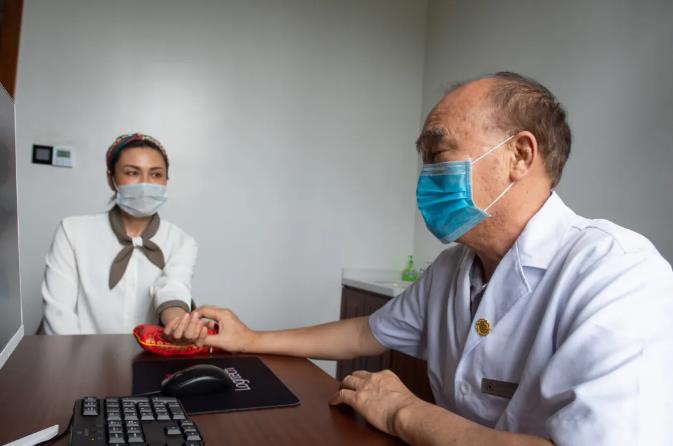
On April 3rd, in Boao Super Chinese Medicine Hospital, Hainan, Chinese medicine felt the pulse of a patient.
Zhang Huailiang, a professor at the First Affiliated Hospital of Henan University of Traditional Chinese Medicine, believes that there are many reasons for the misunderstanding of Chinese medicine, some of which are because some people in the society swindle and cheat under the banner of Chinese medicine; Some are because some Chinese medicine practitioners are not realistic and exaggerate the efficacy of Chinese medicine; Some deliberately find fault and make money by accusing Chinese medicine practitioners of smashing traffic; Others, wearing colored glasses, totally deny the traditional culture of China, and Chinese medicine has also become the target of attack.
Experts said that the green health concept of traditional Chinese medicine, the overall concept of harmony between man and nature, the diagnosis and treatment mode of syndrome differentiation and comprehensive treatment, and the use of natural prevention and treatment methods are particularly in line with the development trend of future medical transformation from disease medicine to health medicine and medical model from biomedicine to "bio-psychological-social" model.
De-generalization and de-mystification
In recent years, the revitalization and development of traditional Chinese medicine has ushered in a historic opportunity with favorable weather, geographical location and human harmony.
"Chinese and Western medicine have different theories and methods. It is the highlight of China’s characteristic medical and health system to advocate equal emphasis, parallelism and combination of Chinese and Western medicine and learn from each other’s strengths." Wang Xueshi, winner of Bethune Medal and former president of Yonghe County Hospital of Traditional Chinese Medicine in Shanxi Province, said that Chinese medicine should first be confident, self-reliant and self-respecting. Only when the medical team learns, understands and loves Chinese medicine can we promote the recognition and acceptance of Chinese medicine by the whole society, improve the medical system with China characteristics and stand in the forefront of world medicine.
The establishment of cultural identity of traditional Chinese medicine is the foundation of developing traditional Chinese medicine. "To popularize the essence of Chinese medicine culture, we must promote it into primary and secondary schools." Wang Xueshi believes that educating children from an early age, loving national culture and advocating Chinese medicine knowledge are conducive to establishing a sense of self-confidence in national culture and Chinese medicine culture. The course focuses on the contribution of traditional Chinese medicine in the history of the development of the Chinese nation and the benevolence of ancient medical experts. Starting from an early age is the first and very important step, and it is also one of the best strategies to solve the problem between doctors and patients.
Liu Yang and other experts said that we should be alert to some generalization, vulgarization and mystification tendencies in the process of inheritance and development of traditional Chinese medicine. It is a huge project to sort out, distinguish and discard the dross of Chinese medicine culture, which cannot be completed by one person and needs the joint efforts of the Chinese medicine community.
"The basic skills of ancient Chinese medicine masters are very solid. I am familiar with the classics of doctors, and now I am not doing well in this respect. At present, it is a big problem not to study and study less. " Wei Zhonghai, a special allowance expert of the State Council and a famous doctor in Shanxi, suggested that young people should be motivated to learn classic works of traditional Chinese medicine, and a group of backbones should be trained from them.
Zhang Huailiang believes that improving the social identity of Chinese medicine depends on the modernization of Chinese medicine, which requires not only maintaining the distinctive advantages of Chinese medicine, but also actively using modern science and technology, extensively absorbing the latest achievements of psychology and other disciplines, and building a scientific and technological innovation system that conforms to the characteristics of Chinese medicine. (Reporter Liu Xiangyu, Liu Huai)
Interview: Philosophical Debate of Traditional Chinese Medicine
Richard Preston wrote in Blood Plague: "There is only one flight between civilization and virus." The current COVID-19 epidemic has swept the world with faster and fiercer steps. In this war between human beings and viruses, every effective blocking result will save more people from the virus. Traditional Chinese medicine has played an important role in this epidemic, and it has become China’s characteristic and China’s plan for epidemic prevention and control. To this end, the reporter interviewed three experts in Chinese medicine philosophy to get a glimpse of the present and future of Chinese medicine from the perspective of "philosophy".
Zhang Daning: The Due Contribution of Philosophical Debate
Talking about the current environment faced by TCM, Zhang Daning, an academician of the International Eurasian Academy of Sciences, a famous nephrologist in China and the founder of TCM nephrology, said frankly: "TCM is much more difficult now than in the era of Zhang Zhongjing and Li Shizhen. At that time, it was a monopoly economy with one business, but now it is a market economy with two businesses. Modern patients often seek medical treatment from western medicine first, and then from Chinese medicine if they can’t be cured, which leaves difficult diseases to Chinese medicine. These are the problems faced by Chinese medicine at present. " He believes that the current Chinese medicine should make more contributions by taking advantage of the situation.
Contribution to medical ideas. Although Chinese medicine was formed more than 2000 years ago, many concepts are scientific and advanced so far. Such as the concept of "certificate". The medical system with "syndrome" as the core is the fundamental feature and advantage of traditional Chinese medicine. It is the analysis, induction and generalization of abnormal life activities of human body from the perspective of the unity of man and nature, and it is the supplement and revision of the concept of "disease" in modern medicine, from which traditional Chinese medicine forms the characteristics of syndrome differentiation and treatment. Further development of this concept will not only greatly improve the effect of disease prevention and treatment, but also deepen the understanding and understanding of diseases and all abnormal life activities of the human body.
"Harmony between man and nature" is an advanced philosophical thought in ancient China, which shows that man and nature are an organic whole, including seasons, climate, day and night, geography and society, which will affect normal and abnormal life activities of human body. Different methods should be adopted for treatment and health preservation according to different seasons and climates.
Contribution to the treatment of diseases. Zhang Daning thinks that the proportion of TCM treatment is different for different types and stages of diseases, but it is obviously incorrect to think that TCM treatment plays an "auxiliary role" in the treatment of all diseases. For example, traditional Chinese medicine plays a very important role in the treatment of nephropathy, especially chronic kidney diseases, at least, it is "half of the rivers and mountains." Other diseases, such as the application of prescriptions for promoting blood circulation and removing blood stasis in cardiovascular and cerebrovascular diseases, the treatment of chronic digestive tract diseases, and some diseases that Chinese medicine considers as "deficiency syndrome" and "depression syndrome", are all promising. The view that traditional Chinese medicine is only a "preventive medicine" is obviously inaccurate. Traditional Chinese medicine is a complete medicine that can treat both the sick and the untreated. Only by understanding the sick can we talk about the preventive medicine.
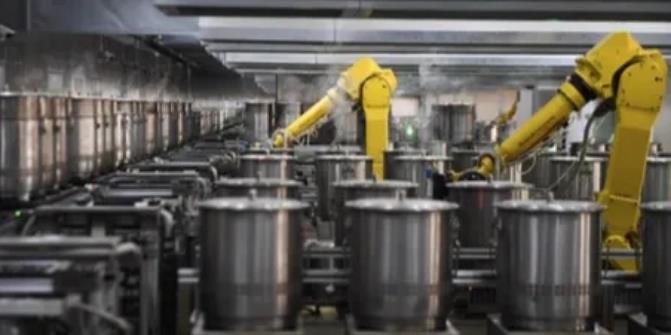
The intelligent decocting assembly line of East China Medicine Decocting Service Center, which was filmed on February 19th. The assembly line can accommodate more than 480 decocting barrels per hour and simultaneously decoct Xu Yushe.
Contribution to disease prevention, health preservation and rehabilitation. Zhang Daning believes that disease prevention, health preservation and rehabilitation are the strengths of traditional Chinese medicine. It is not only "preventing and treating diseases and protecting health", but more importantly, "improving people’s overall quality and quality, achieving the purpose of physical and mental health and prolonging life". In addition, Chinese medicine has rich experience in sequelae of cerebrovascular disease and orthopedic rehabilitation, and in preventing epidemics and infectious diseases.
Contribution to traditional Chinese medicine. Traditional Chinese medicine is a huge treasure-house, and Compendium of Materia Medica, Newly Revised Materia Medica, and Materia Medica for Emergency in Classics and History are all treasures of traditional Chinese medicine. Since the mid-20th century, scholars from all over the world have studied the "effective components" of traditional Chinese medicine, and made some significant achievements. It was under the guidance of his father-in-law who was a famous pharmacologist, Chen Kehui, who extracted ephedrine from Chinese traditional medicine Ephedra.
As for the broader study of "prescription composition", it is another treasure house of traditional Chinese medicine. According to incomplete statistics, there are tens of thousands of prescriptions recorded in ancient books alone. If great achievements can be made in this field, it will bring brand-new progress to world medicine.
Wu Kefeng: The Reason for Questioning Philosophical Debate
Wu Kefeng, a professor at the School of Philosophy of Nankai University and vice chairman of the Chinese Philosophy Committee of the Chinese Society of Philosophy History, believes that there are still people who are questioning the efficacy of Chinese medicine, which is closely related to the understanding of the cultural background and philosophical background of the survival of Chinese medicine.
Changes in living environment. The cultural background of TCM is China’s philosophy, and TCM is an integral part of China’s philosophy and China’s culture. At the same time, it is medicine itself, and the most important problem it faces and needs to solve is disease. The existence of traditional Chinese medicine needs to be supported by a suitable cultural and philosophical background. The cultural environment in which traditional Chinese medicine exists today is very different from that in ancient times.
The way of thinking changes. The key to the debate on the retention or abolition of TCM is that there is a problem in philosophical theory and thinking mode, that is, the western thinking mode that emphasizes analysis and demonstration is regarded as the only scientific thinking mode. Traditional Chinese medicine was originally born in the struggle between the ancients and diseases in China, but it quickly improved its level of understanding with the help of China’s ancient philosophy, and was constantly influenced by China’s philosophy to open the way to expand its own rational consciousness.
On the essence of the dispute between China and the West. To have an all-round understanding of traditional Chinese medicine needs to be understood from a philosophical and cultural perspective. The essence of the dispute between Chinese and western medicine is the dispute between Chinese and western philosophy and culture, and it is a question of cultural self-confidence and cultural consciousness. Therefore, it is very important to conduct in-depth research on the correlation between China’s philosophy and traditional Chinese medicine, tap the rational spirit deeply hidden in traditional Chinese medicine, provide the cultural background environment for the growth and development of traditional Chinese medicine, get rid of the dilemma of broken knowledge of traditional Chinese medicine and fight alone, and form the resultant force of cultural environment. Of course, this kind of research is not simply retro, but also to retain the essence in comparing the respective strengths of Chinese and Western cultures.
Juck Zhang Zhong: The Path of Philosophical Debate on the Future
Juck Zhang Zhong, a researcher at the China Institute of Science and Technology Information and vice-president of the Chinese Philosophy Committee of the Chinese Society for the History of Philosophy, believes that in the past century, Chinese medicine has been in a debate about its existence or abolition, and it has been in a passive position for a long time. The curative effect is the last word before a mature scientific theory gives a reasonable explanation, or before the self-explanation of Chinese medicine theory is accepted.
Juck Zhang said that in the process of preventing and controlling the COVID-19 epidemic, Chinese medicine once again showed the characteristics of "simplicity, convenience, experience and cheapness", which is simple and efficient. This characteristic is beyond the interpretation of modern science and civilization and is conducive to promoting a new understanding of Chinese civilization.
Historically, Chinese medicine not only has clinical curative effect, but also has health care function, humanistic care and life care, which embodies the cognitive style and lifestyle of the Chinese nation on a more basic level.
Only for a hundred years, the diversity and effectiveness of traditional Chinese medicine have been questioned by western scientific concepts, and have not been valued by Chinese people.
"Deeply grasping the historical responsibility of traditional Chinese medicine, deeply studying the scientific and civilized system behind the curative effect, and creating a new era interpretation system of traditional Chinese medicine integrating science and culture are major issues facing the comprehensive innovation of academic theory in China." Juck Zhang said, "Chinese medicine has always been a part of the treasure house of Chinese civilization, and it should be a new trend to distinguish between Chinese medicine and Chinese medicine." (Reporter Zhang Jianxin Bai Jiali)
Source: Half-monthly Talk about Internal Edition, No.5, 2020